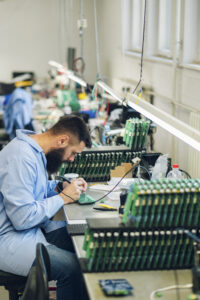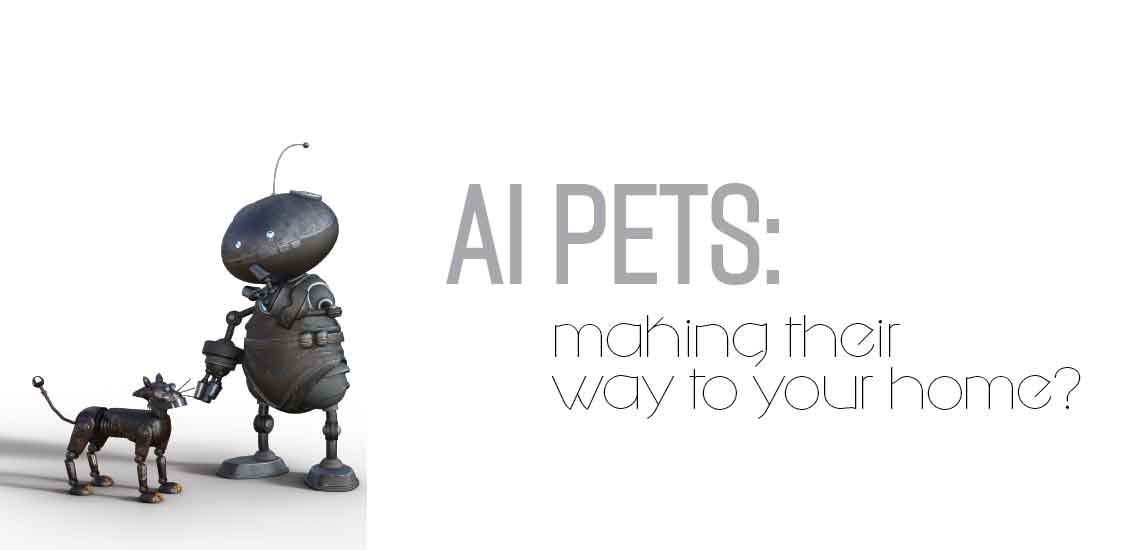You’ve definitely heard us talking about artificial intelligence before. AI technology is hot these days, with many companies turning to AI for more advanced and automated technology. For example, Sony has had a long history of innovation. In 1999, Sony released AIBO, a robotic pet that was designed as an alternative for a real pet. AIBO was considered a sophisticated piece of technology when it came out because robotic technology was fairly new at the time, let alone robot pets. Recently, Sony announced its newest and latest AIBO dog that boasts AI, IoT and cloud technology capabilities. Setting an example for the future of robotic pets, AIBO brings an interesting perspective when it comes AI robotics technology, specifically robot pets.
The original AIBO garnered a lot of attention when it first came out, especially the attention of young children everywhere. However, AIBO didn’t take off the way Sony wanted it to and Sony ended up discontinuing AIBO. But AIBO was resurrected from the dead when Sony announced that a new, high-tech AIBO would be making its way into the robotics market. Robot pets may not be for everyone. However, Sony has made it so that AIBO can mimic the behavior of a real dog. Rather than possessing the “canine instinct” of dogs, AIBO develops its personality based on its surroundings and interactions with people. AIBO incorporates cloud computing technology to store “memories” and the character traits it develops. On top of that, AIBO also serves as an IoT device with internet connectivity and uses embedded sensors and actuators to display/understand emotions, detect sounds and perform actions that dogs would. By incorporating these common technologies together, AIBO is an example of the technological advances that have been made in robotics, AI and smart devices.
Sony’s AIBO is not the only robotic pet technology out there. Other companies have been working on AI pets as well. Just last year, a company named ROOBO released its “pet robot” affectionately named Domgy. Similar to AIBO, Domgy also incorporates artificial intelligence and sensors to mimic the behavior of real-life pets. With different companies mass-producing all types of robot pets, we start to wonder the impact these pets will have on our society down the line. Robot pets are designed to be easier to maintain than regular pets. There are high costs to pet ownership which include things like food, medicine, toys and veterinarian visits. With the robot pets, these costs are slashed significantly since the robot pets don’t necessarily need those things to survive. The pets are programmed to appeal to human emotions and provide people the companionship they may seek without the commitment of a real pet. Creators have programmed and created robot pets to mimic the behaviors of real-life pets and act like them; to the point where robot pets are considered potential solutions for animal welfare and population issues. It is very interesting to see how technology plays a part in our lives; however, we always need to consider the costs and benefits of implementing certain technologies in our lives – robot pets included. Although some people have started to embrace the robot pet trend, others are reluctant because robot pets don’t offer the same emotional connection as a real-life pet would. The other big counterargument relating to AIs is the concern that AIs will supersede human intelligence and create problems in the long run.
Smart devices are already making their way into homes and maybe AIBO and/or other robotic pets will make their way into homes. With the increasing interest in AI, IoT and cloud technology, AIBO is an example of a technology-encompassing device that does what smart devices are intended to do: provide convenience, sustainability and automation in people’s lives. It’s disheartening to think about, but our pets can’t live forever. With the alternative of having a robotic pet that mimics the behaviors of actual pets, sans the fluff and cuddliness, will robotic pets in households become widely adopted later down the line?






